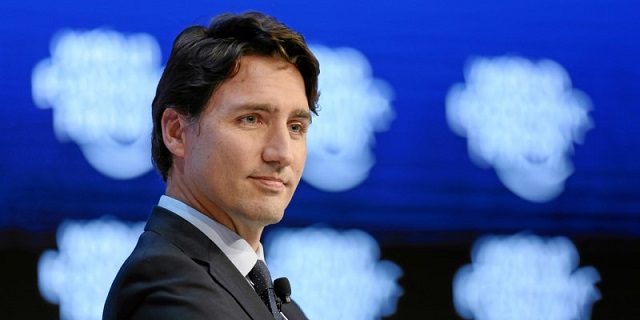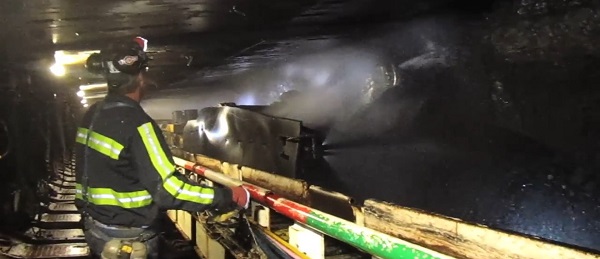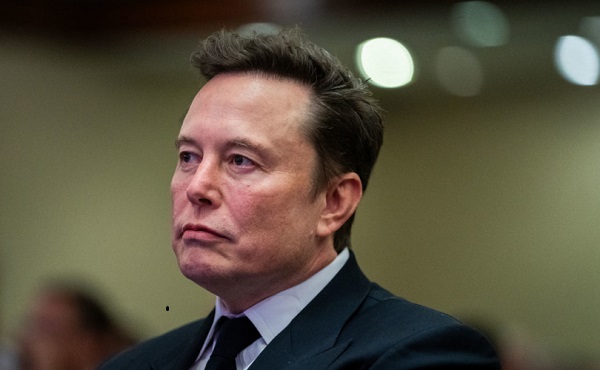Business
Balanced budget within reach—if Ottawa restrains spending

From the Fraser Institute
By Jake Fuss and Grady Munro
This level of debt-financed spending has contributed to an estimated $941.9 billion increase in gross federal debt from 2014/15 to 2023/24. In other words, partly due to its spending habits, nearly one in every two dollars of debt currently held by the federal government has been accumulated under Prime Minister Trudeau.
The Trudeau government will table its next budget on April 16. Federal finances have deteriorated in recent years due to the Trudeau government’s string of budget deficits, and high spending has led to a significant amount of debt accumulation, which imposes costs on current and future generations. Yet if the government presents a plan in Budget 2024 to rein in spending growth, it could balance the budget in two years.
Far from its promise to balance the budget by 2019, the Trudeau government has instead run nine consecutive deficits during its time in office. And it doesn’t intend to stop, with annual deficits exceeding $18 billion planned for the next five years.
The root cause of these deficits is the government’s inability to restrain spending. Since 2014/15, annual program spending (total spending minus debt interest) has increased $193.6 billion—or 75.5 per cent. If we control for population growth and inflation, this represents an extra $2,330 per person.
This level of debt-financed spending has contributed to an estimated $941.9 billion increase in gross federal debt from 2014/15 to 2023/24. In other words, partly due to its spending habits, nearly one in every two dollars of debt currently held by the federal government has been accumulated under Prime Minister Trudeau. Debt accumulation will only continue barring a change in course, as the federal government is expected to add another $476.9 billion in gross debt over the next five years.
Simply put, the Trudeau government’s approach towards federal finances has been characterized by high spending, large deficits and significant debt accumulation.
This approach to fiscal policy is concerning. Growing government debt leads to higher debt interest costs, all else equal, which eat up taxpayer dollars that could otherwise have provided services or tax relief for Canadians. And these costs are not trivial. For example, in 2023/24 the federal government is expected to spend more to service its debt ($46.5 billion) than on child-care benefits ($31.2 billion).
Accumulating debt today also increases the tax burden on future generations of Canadians—who are ultimately responsible for paying off this debt. Research suggests this effect could be disproportionate, with future generations needing to pay back a dollar borrowed today with more than one dollar in future taxes.
Although the Trudeau government promises more of the same for the coming years, this need not be the case. Instead, a recent study shows the federal government could balance the budget in two years if it slows spending growth starting in 2024/25. The following figures highlight this approach. The first chart below displays currently planned federal program spending from 2023/24 to 2026/27, compared with the spending path that will balance the budget, while the second chart shows the resulting budgetary balances.
As shown by the first chart, to balance the budget by 2026/27 the federal government must limit annual spending growth to 0.3 per cent for two years. As a result, annual nominal program spending would rise from $469.4 billion in 2024/25 to $472.3 billion in 2026/27. For comparison, the Trudeau government currently plans to increase annual spending up to $499.4 billion during that same period.
Should the government implement this level of spending restraint, the federal deficit would shrink to $21.8 billion in 2025/26 (as opposed to $38.3 billion), and the budget would be balanced by 2026/27 (as opposed to a $27.1 billion deficit). All told, by slowing spending growth to balance the budget, the federal government would avoid accumulating significant debt. Moreover, this also sets the government up to return to budget surpluses in the following years, which could be used to start chipping away at the mountain of federal debt already on the books.
Rather than continue its current approach to fiscal policy, and risk needing to employ more drastic cuts in the future, the Trudeau government should implement modest spending restraint now and balance the budget.
Authors:
2025 Federal Election
Poilievre will cancel Mark Carney’s new Liberal packaging law and scrap the Liberal plastic ban!

From Conservative Party Communications
Conservative Leader Pierre Poilievre promised today that a new Conservative government will stop Mark Carney’s proposed Liberal food tax and scrap the existing Liberal plastic ban. Poilievre will:
- Stop proposed new labelling and packaging requirements that will raise the cost of fresh produce by as much as 34% and cost the average Canadian household an additional $400 each year.
- Scrap the Liberal plastics ban, including the ban on straws, grocery bags, food containers and cutlery, and other single-use plastics, letting consumers and businesses choose what works for them.
- Protect restaurants, grocers, and low-income Canadians from one-size-fits-all packaging rules that disproportionately affect those who can least afford it.
“After the Lost Liberal Decade, many Canadians can barely afford to put food on the table. And now Mark Carney and the Liberals want to make it even harder with a new food packaging law that will raise the price of food–again,” said Poilievre. “A new Conservative government will keep food prices down by scrapping the Liberal plastic ban and stopping Carney’s new Liberal food tax.”
After a decade of out-of-control spending and massive tax increases, families are spending $800 more on food this year than they did in 2024, and food banks had to handle a record two million visits in a single month. In Montreal, 44 percent of CEGEP students are experiencing some form of food insecurity, while places like Hawkesbury, Kingston, Toronto and Mississauga have all declared food insecurity emergencies.
And food prices are still rocketing upwards, surging by 3.2% over the last year, with no end in sight. In the last month alone, food inflation increased by 1.9 percentage points—the largest monthly jump in food prices in decades.
As if this wasn’t bad enough, Liberals have made life even more expensive and inconvenient for Canadians by banning plastics – including everything from straws to bags to food packaging. The current Liberal ban on single-use plastics will cost Canadians $1.3 billion dollars over the next decade.

Now Mark Carney wants to make it worse by adding complicated and costly new food packaging rules that will drive up the price of food even more–in effect, a new Liberal food tax. Plastic food packaging makes up 1/3 of all plastic packaging in Canada. The proposed Liberal food tax will cost the average Canadian household an additional $400 each year, waste half a million tonnes of food, decrease access to imported fruit and produce, and increase food inflation. The Chemistry Industry Association of Canada has also warned that this tax will put up to 60,000 Canadians out of work.
“The Liberals’ ideological crusade against convenience has already driven up food prices and the last thing Canadians need is Mark Carney’s new food tax added directly to your grocery bill,” said Poilievre. “The choice for Canadians is clear, a fourth Liberal term that will make food even more expensive or a new Conservative government that will axe the food tax and bring back straws, grocery bags and other items, to make life more affordable and convenient for Canadians – For a Change.”
Business
Ted Cruz, Jim Jordan Ramp Up Pressure On Google Parent Company To Deal With ‘Censorship’

From the Daily Caller News Foundation
By Andi Shae Napier
Republican Texas Sen. Ted Cruz and Republican Ohio Rep. Jim Jordan are turning their attention to Google over concerns that the tech giant is censoring users and infringing on Americans’ free speech rights.
Google’s parent company Alphabet, which also owns YouTube, appears to be the GOP’s next Big Tech target. Lawmakers seem to be turning their attention to Alphabet after Mark Zuckerberg’s Meta ended its controversial fact-checking program in favor of a Community Notes system similar to the one used by Elon Musk’s X.
Cruz recently informed reporters of his and fellow senators’ plans to protect free speech.
Dear Readers:
As a nonprofit, we are dependent on the generosity of our readers.
Please consider making a small donation of any amount here. Thank you!
“Stopping online censorship is a major priority for the Commerce Committee,” Cruz said, as reported by Politico. “And we are going to utilize every point of leverage we have to protect free speech online.”
Following his meeting with Alphabet CEO Sundar Pichai last month, Cruz told the outlet, “Big Tech censorship was the single most important topic.”
Jordan, Chairman of the House Judiciary Committee, sent subpoenas to Alphabet and other tech giants such as Rumble, TikTok and Apple in February regarding “compliance with foreign censorship laws, regulations, judicial orders, or other government-initiated efforts” with the intent to discover how foreign governments, or the Biden administration, have limited Americans’ access to free speech.
“Throughout the previous Congress, the Committee expressed concern over YouTube’s censorship of conservatives and political speech,” Jordan wrote in a letter to Pichai in March. “To develop effective legislation, such as the possible enactment of new statutory limits on the executive branch’s ability to work with Big Tech to restrict the circulation of content and deplatform users, the Committee must first understand how and to what extent the executive branch coerced and colluded with companies and other intermediaries to censor speech.”
Jordan subpoenaed tech CEOs in 2023 as well, including Satya Nadella of Microsoft, Tim Cook of Apple and Pichai, among others.
Despite the recent action against the tech giant, the battle stretches back to President Donald Trump’s first administration. Cruz began his investigation of Google in 2019 when he questioned Karan Bhatia, the company’s Vice President for Government Affairs & Public Policy at the time, in a Senate Judiciary Committee hearing. Cruz brought forth a presentation suggesting tech companies, including Google, were straying from free speech and leaning towards censorship.
Even during Congress’ recess, pressure on Google continues to mount as a federal court ruled Thursday that Google’s ad-tech unit violates U.S. antitrust laws and creates an illegal monopoly. This marks the second antitrust ruling against the tech giant as a different court ruled in 2024 that Google abused its dominance of the online search market.
-

 Daily Caller1 day ago
Daily Caller1 day agoTrump Executive Orders ensure ‘Beautiful Clean’ Affordable Coal will continue to bolster US energy grid
-

 2025 Federal Election1 day ago
2025 Federal Election1 day agoBREAKING from THE BUREAU: Pro-Beijing Group That Pushed Erin O’Toole’s Exit Warns Chinese Canadians to “Vote Carefully”
-

 Business1 day ago
Business1 day agoChina, Mexico, Canada Flagged in $1.4 Billion Fentanyl Trade by U.S. Financial Watchdog
-

 COVID-191 day ago
COVID-191 day agoTamara Lich and Chris Barber trial update: The Longest Mischief Trial of All Time continues..
-

 2025 Federal Election2 days ago
2025 Federal Election2 days agoTucker Carlson Interviews Maxime Bernier: Trump’s Tariffs, Mass Immigration, and the Oncoming Canadian Revolution
-

 Energy1 day ago
Energy1 day agoStraits of Mackinac Tunnel for Line 5 Pipeline to get “accelerated review”: US Army Corps of Engineers
-

 2025 Federal Election1 day ago
2025 Federal Election1 day agoAllegations of ethical misconduct by the Prime Minister and Government of Canada during the current federal election campaign
-

 Business2 days ago
Business2 days agoDOGE Is Ending The ‘Eternal Life’ Of Government








